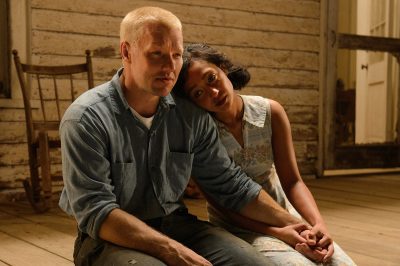
“Loving” had the potential to be another simple retelling of love that prevailed in the face of adversity. There have been countless movies such as this, in which the actors fail to fully grasp the characters they are playing while the cinematography and over-dramatic score make true stories too “Hollywood.”
Instead, “Loving,” released Nov. 4, is a brilliant cinematic adaptation of the couple behind Supreme Court case Loving v. Virginia that made anti-miscegenation laws unconstitutional.
Transporting the audience back to a time when interracial marriage was not only frowned upon but illegal in many states, director Jeff Nichols recreates the story of Richard Loving (Joel Edgerton), a white man, and his wife Mildred (Ruth Negga), a black woman, as they battle for the right to remain married and raise their children in their hometown of Central Point.
After being arrested by Sheriff Brooks (Marton Csokas) for breaking the Virginian anti-miscegenation law, the Lovings find themselves faced with prison time and an opportunity to make history. Through ups and downs, love prevails and the Supreme Court rules in favor of the Lovings in 1967, legalizing interracial marriage nationwide.
This true story is fictionalized in an awesomely authentic way that instills in the audience all the fear, love, hate and resilience of each character.
“Loving” wastes no time on properly laid-out introductions. Instead of a love story neatly told from first kiss to last breath, it starts where the marriage begins, long after the unbreakable bond between Mildred and Richard had been formed.
This choice worked exceptionally well in focusing the film on the controversy to follow their marriage rather than simply a love story. Additionally, it created the feeling that the audience was merely present for a piece of their story, rather than being dragged along for the whole ride.
The most striking part of the film, however, was the shockingly small amount of dialogue spoken between the two main characters. Though at first jarring, it allowed for the true connection between the couple to be shown through comforting hands, intense stares and unspoken loyalty to each other and their family.
Entire conversations were had with just a look or a touch. Often, silence said more than words ever could, as is often so in long-term relationships. The dynamic between the two actors was moving and relatable to say the least.
The music, by David Wingo, was extremely minimal but equally effective, allowing for the silence that gave the film an authentic, realistic feeling and depicting the quiet of the Virginian countryside with perfection. This contrasted nicely with the hectic sounds of horns, construction and neighbors present in scenes set in Washington, D.C.
Negga’s performance was outstanding, recreating Mildred’s humble sweetness and quiet strength with ease. Her eyes often said more than her words, but close up facial shots captured each expression as if you could see each unspoken thought.
Complementing her performance perfectly, Edgerton’s take on Richard was spot on. His desire to provide for his family and give them a good life came through strongly. At times, he even provided a bit of comic relief with his quiet stares and southern charm. Ultimately, he was an intense yet loving character, truly living up to his last name.
Simple camera angles add even more this film’s authenticity. The camera rarely moves unless a character does, a bold but successful decision. The colors of the countryside were vibrant and calming while the drab earthy tones of Washington, D.C. contributed to creating the ultimate goal of the Lovings: to return home to Virginia.
“Loving” does not spend much time showing courtrooms and legal documents, however. Instead, Nichols chose to show the audience the Lovings, Mildred and Richard, hanging out with friends, playing with their children and building their lives together.
Still, the cold and hate-filled performance by Csokas as Sheriff Brooks is enough to send a chill down your spine. Each scene he enters immediately builds immense tension. He does not smile once, acting as a symbol for the larger resistance present in the country at the time.
However, Nichols does not delve into the politics of the time. Instead, he chooses to focus on the couple, the uniqueness of their love and the strength that it held.
The true and courageously strong love between Richard and Mildred comes through more than anything else in the film. More than just a married couple or a mom and dad, they were a team, with trust and devotion that was clear as day in every scene. It felt as if no obstacle could ever tear them apart.
Released in theaters during a time with much racial disparity in the United States, “Loving” ultimately reminds us of two things: we have come so far, and love will always win.
























































































































